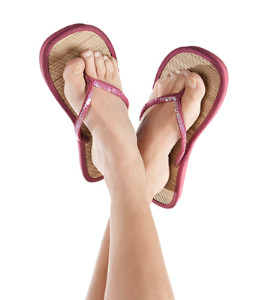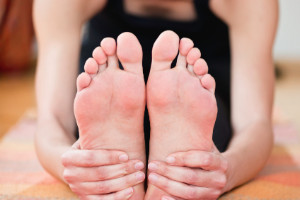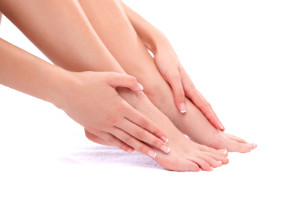 It is no secret that flip-flops can be harmful for your feet. While these noisy shoes may offer a bit more protection for your feet compared to walking barefoot, they do not offer any arch or heel support. Flip-flops can cause small problems such as corns and calluses, or it can cause more serious conditions such as plantar fasciitis. You should also be aware of the fact that flip-flops may cause you to injure yourself by tripping or falling. Flip-flops should only be worn for a short amount of time and are not meant for long-term use. However, if you opt to wear them you should look for a pair that are high quality and made out of leather. The leather material will help prevent blisters and other types of irritation.
It is no secret that flip-flops can be harmful for your feet. While these noisy shoes may offer a bit more protection for your feet compared to walking barefoot, they do not offer any arch or heel support. Flip-flops can cause small problems such as corns and calluses, or it can cause more serious conditions such as plantar fasciitis. You should also be aware of the fact that flip-flops may cause you to injure yourself by tripping or falling. Flip-flops should only be worn for a short amount of time and are not meant for long-term use. However, if you opt to wear them you should look for a pair that are high quality and made out of leather. The leather material will help prevent blisters and other types of irritation.
Flip-flops are not always the best choice of footwear. If you have any concerns about your feet or ankles, contact one of our podiatrists from Westside Podiatry Center, LLP. Our doctors will assist you with all of your foot and ankle needs.
Flip-Flops and Feet
When the weather starts warming up, people enjoy wearing flip-flops. Flip-flops are comfortable, stylish, and easy to slip on and off; they're perfect for any summer beach goer. However, these shoes can cause harm to the feet.
How Can Flip-Flops Affect Me Long-Term?
- Ankle problems
- Hip problems
- Lower back problems
- Pain in the balls of the feet
- Problems with foot arches
- Changes in the way you walk
Are There Injuries Associated with Flip-Flops?
Yes. Since flip-flops are relatively weak and do not provide the same amount of support as sneakers, people who wear flip-flops regularly are more susceptible to injuries. On top of that, the open nature of the shoe makes your feet more prone to other problems, such as cuts and even infections. Common injuries and ailments include:
- Sprained ankles
- Blisters
- Infections
- Cuts and Scrapes
I like Wearing Flip-Flops. Are There Safe Alternatives?
When buying flip-flops, try to find ones that have sturdy soles and that are made of high-quality materials that will support for your feet. These flip-flops will cost more but will also last longer as a result.
If you have any questions please feel free to contact one of our offices located in Liverpool, Camillus, Skaneateles, Oswego, and Cicero, NY . We offer the newest diagnostic and treatment technologies for all your foot and ankle needs.
 Athlete’s foot
Athlete’s foot

